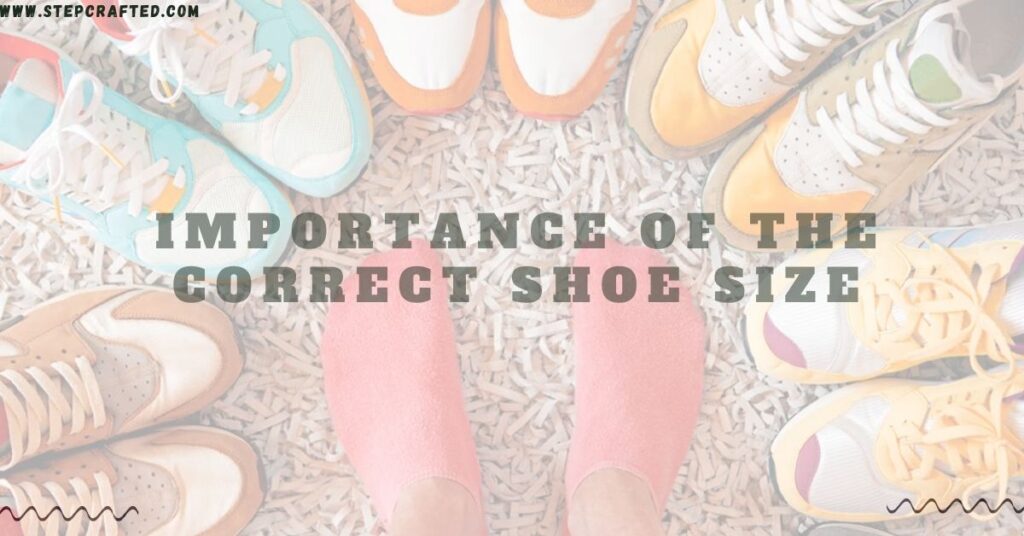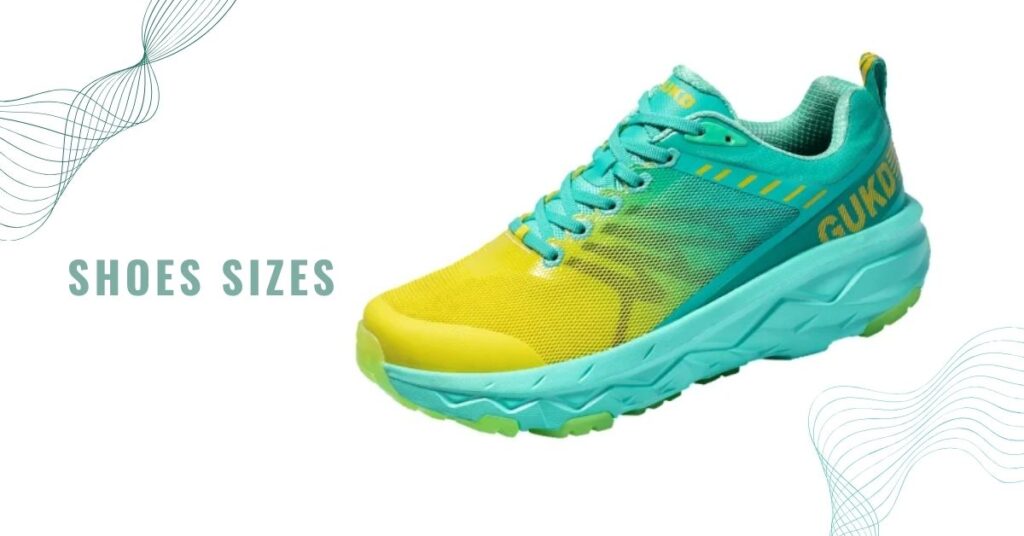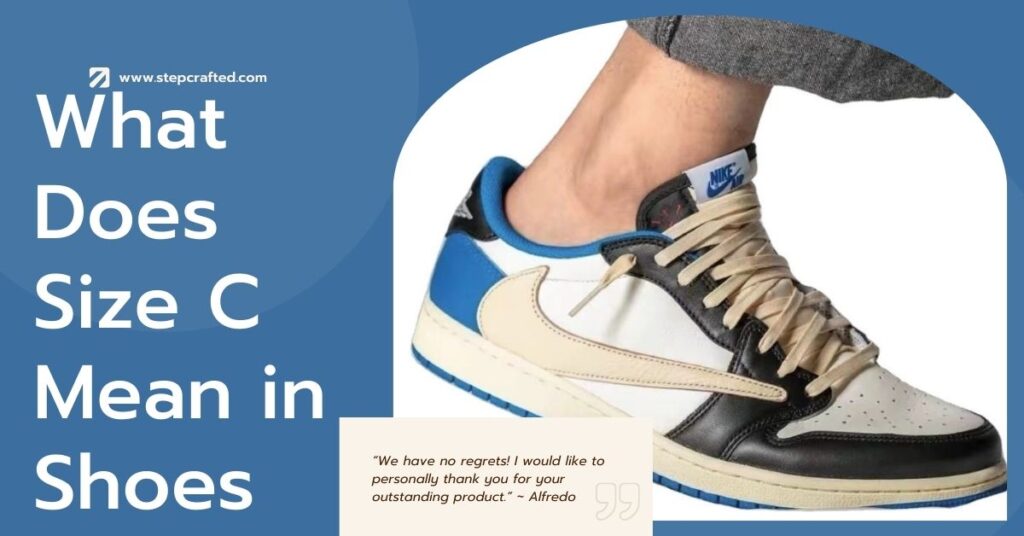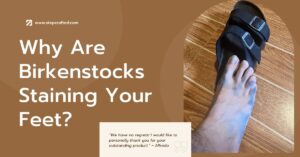Finding the perfect shoe fit isn’t just about the number on the box—it’s about mastering the language of shoe sizing. “Size C” might sound like cryptic footwear jargon, but it’s a crucial element in ensuring your shoes feel as good as they look. This guide is your key to decoding size C, giving you the insights needed to pick footwear that not only fits but also supports and enhances comfort.
Contents
ToggleWhy does shoe width matter, you ask? Well, it’s more than just preventing that dreaded toe squeeze; it’s about matching the shoe to the natural contour of your foot. A proper width ensures that your shoes work with your feet, not against them, allowing you to stride without pain or discomfort. Understanding size C is essential whether you’re sprinting for the bus or strolling through a park.
In this guide, we’ll dive deep into what size C means for your shoe choices. You’ll learn how to navigate the complexities of shoe widths to find the best fit for both style and comfort. By the end, you’ll not only know the significance of size C but also how to use this knowledge to enhance your shoe-shopping experience, ensuring every pair you choose is a step in the right direction.
What Does Size C Mean in Shoes?
When you’re browsing for shoes, you’ll notice that the labels include both numbers and letters—the numbers measure the length of your foot, while the letters gauge the width. Size C, a common yet often misunderstood element on these labels, specifically refers to width. Depending on the brand, there can be slight variations, but generally, size C stands for a “medium” width in women’s footwear and a “narrow” width in men’s shoes.
This distinction is crucial as it influences how the shoe will fit and feel. A medium width in women’s shoes offers a balanced fit that accommodates the average foot without squeezing or leaving too much space. For men, a narrow width is tailored to those with slimmer feet, providing a snug fit that enhances support and prevents the foot from sliding around inside the shoe.
Understanding these nuances can dramatically improve your shopping experience, ensuring you select a shoe that fits well across the breadth of your foot, not just from heel to toe. This knowledge helps you tailor your choices to your specific foot shape, leading to better comfort and reduced foot fatigue, whether you’re gearing up for a workday or gearing down for a leisurely evening walk.
Why is Shoe Width Important?
- Toe Overhang: Incorrect shoe width can cause your toes to hang over the edge of the shoe’s sole, leading to discomfort and balance issues.
- Side Pressures: Shoes that are too narrow can create uncomfortable pressure on the sides of your feet, potentially causing blisters and calluses.
- Arch Discomfort: A shoe that doesn’t fit properly in width can lead to inadequate support for the arch, causing foot fatigue and pain.
Understanding Shoe Widths
Shoe widths can vary significantly, offering options from very narrow to extra wide to accommodate the diversity of foot shapes among consumers. These widths are categorized and labeled by letters, or sometimes a combination of letters, to help guide buyers in finding the perfect fit. Here’s a breakdown of how these sizes typically translate:
Narrow Widths
- Usually Denoted by A or B: These are the narrowest options available, suited for individuals with slender feet. Shoes labeled with an ‘A’ are extremely narrow, while those marked with a ‘B’ are just slightly wider but still considered narrow. These sizes ensure a snug fit that helps prevent the foot from sliding forward, a common issue with broader shoes.
Medium Widths
- Often Represented as C or D: This range is designed for the average foot width. Size C in women’s footwear and D in men’s footwear generally signify a medium width. These are the most commonly purchased widths, as they are intended to fit a large portion of the population comfortably, providing balanced support without constricting or leaving excessive space.
Wide Widths
- Typically Labeled as E, EE, or Wider: Wide widths are crafted for those who find medium or narrow shoes too restrictive. E widths offer a modest increase in space, while EE widths provide a significant expansion in the shoe’s interior. These sizes cater to individuals with broader feet or specific medical conditions that require more room, enhancing comfort and preventing issues related to tight footwear.
Each of these categories addresses different needs, ensuring that everyone can find shoes that not only fit but also contribute to overall foot health and comfort. By understanding the significance of these width labels, you can better navigate the array of choices available and select shoes that will offer the best fit and support for your daily activities.
Why is Shoe Width Important?
- Toe Overhang: Incorrect shoe width can cause your toes to hang over the edge of the shoe’s sole, leading to discomfort and balance issues.
- Side Pressures: Shoes that are too narrow can create uncomfortable pressure on the sides of your feet, potentially causing blisters and calluses.
- Arch Discomfort: A shoe that doesn’t fit properly in width can lead to inadequate support for the arch, causing foot fatigue and pain.

Understanding Shoe Widths
Shoe widths range from very narrow to extra wide. Each width size is typically indicated by a letter or combination of letters.
- Narrow Widths: Usually denoted by A or B.
- Medium Widths: Often represented as C or D.
- Wide Widths: Typically labeled as E, EE, or wider.
Finding Your Shoe Width
DIY Measuring
You can measure your foot width at home by tracing your foot on a piece of paper and measuring the widest points.
Professional Fittings
Visiting a shoe store for a professional measurement is the best way to ensure accurate sizing.
The Brand Shuffle
Different brands may have slight variations in size, so it’s essential to try on different sizes and brands to find the best fit.
Understanding Shoe Widths: From Very Narrow to Extra Wide
Shoe widths can vary significantly, offering options from very narrow to extra wide to accommodate the diversity of foot shapes among consumers. These widths are categorized and labeled by letters, or sometimes a combination of letters, to help guide buyers in finding the perfect fit. Here’s a breakdown of how these sizes typically translate:
Narrow Widths
- Usually Denoted by A or B: These are the narrowest options available, suited for individuals with slender feet. Shoes labeled with an ‘A’ are extremely narrow, while those marked with a ‘B’ are just slightly wider but still considered narrow. These sizes ensure a snug fit that helps prevent the foot from sliding forward, a common issue with broader shoes.
Medium Widths
- Often Represented as C or D: This range is designed for the average foot width. Size C in women’s footwear and D in men’s footwear generally signify a medium width. These are the most commonly purchased widths, as they are intended to fit a large portion of the population comfortably, providing balanced support without constricting or leaving excessive space.
Wide Widths
- Typically Labeled as E, EE, or Wider: Wide widths are crafted for those who find medium or narrow shoes too restrictive. E widths offer a modest increase in space, while EE widths provide a significant expansion in the shoe’s interior. These sizes cater to individuals with broader feet or specific medical conditions that require more room, enhancing comfort and preventing issues related to tight footwear.
Each of these categories addresses different needs, ensuring that everyone can find shoes that not only fit but also contribute to overall foot health and comfort. By understanding the significance of these width labels, you can better navigate the array of choices available and select shoes that will offer the best fit and support for your daily activities.
Detailed Breakdown of Size C in Shoes For the Ladies In women’s shoes, a C width is generally considered medium, fitting the average foot. For the Gents In men’s footwear, a C width is relatively narrow, with D being the standard medium width.
Detailed Breakdown of Size C in Shoes
For the Ladies
In the world of women’s footwear, a size C is categorized as a medium width. This designation is tailored to comfortably fit what is considered the average foot width among women. Shoes marked with a size C are designed to provide a balance between snugness and spaciousness, ensuring there is enough room to prevent any discomfort, yet close-fitting enough to offer proper support and avoid the shoe feeling loose or slipping off. This size is ideal for those who find narrow widths too restrictive and wide widths too roomy.
For the Gents
In contrast, for men’s footwear, a size C takes on a different dimension, classified as a narrow width. The typical standard medium width for men is denoted by a D. Men with narrower feet would find a size C appropriate as it offers a tighter fit that helps in maintaining stability and control, particularly important for dynamic activities or long periods of wear. This size ensures that the shoe conforms closely to the contours of a narrower foot, providing adequate support without excess material that could lead to inefficient movement or shoe malfunction during use.
This difference underscores the importance of understanding how shoe widths are specified across genders. It highlights the need for both men and women to be aware of their foot width as well as the standard sizing conventions used by shoe manufacturers to ensure optimal comfort and functionality from their footwear.
Finding Your Shoe Width
DIY Measuring
You can measure your foot width at home by tracing your foot on a piece of paper and measuring the widest points.
Professional Fittings
Visiting a shoe store for a professional measurement is the best way to ensure accurate sizing.
The Brand Shuffle
Different brands may have slight variations in size, so it’s essential to try on different sizes and brands to find the best fit.
Tips for Buying Size C Shoes
- Understand Your Need: Consider the purpose of the shoes, whether for daily wear, sports, or formal occasions.
- Feel the Materials: Materials can affect the fit. Leather can stretch over time, while synthetic materials might not.
- Match the Occasion: Choose styles that suit the occasion and that you can wear comfortably for hours.
- Dive into Technology: Look for shoes with advanced features like enhanced arch support or cushioned soles.
- Break Them in Gradually: Allow your shoes to mold to your feet naturally to prevent discomfort.
Additional Considerations
Easy Entry
Choosing shoes that are easy to put on and remove can greatly enhance your daily routine, particularly for those who value quick transitions or face mobility challenges. Shoes with features like elastic laces, velcro straps, or slip-on designs not only save time but also reduce the strain of putting on or taking off tightly fitted shoes. This consideration is essential for ensuring comfort and convenience in daily wear.
Invest in Quality Socks
The importance of socks is often underestimated in the footwear equation. Investing in quality socks that are appropriate for the material and fit of your shoes can dramatically improve both comfort and foot health. Socks act as a barrier against friction, help manage moisture, and provide an additional layer of cushioning. They can adjust the fit of a shoe, filling out space if needed, or providing snug comfort to avoid slippage.
Maintenance is Key
The longevity of your shoes significantly depends on how well you care for them. Regular cleaning to remove dirt and odors, using the right products to maintain material integrity, and proper storage to retain their shape are all crucial. Shoes should ideally be stored in a cool, dry place and kept on a shoe tree or stuffed with newspaper to prevent creasing and maintain their form.
Common Concerns and Myths About Width Sizing
A widespread myth in shoe sizing is that once you reach adulthood, your foot size remains static. However, it’s more accurate to understand that feet can change size and shape due to factors like aging, hormonal changes, or weight fluctuations. Regularly measuring your feet can help you keep up with any changes and ensure that your shoe size remains optimal for comfort and support, debunking the myth that foot size never changes once you reach a certain age.

Importance of the Correct Shoe Size
Choosing the correct shoe size and width isn’t just about comfort—it’s a critical aspect of maintaining overall foot health. Wearing shoes that fit properly can prevent a range of common foot problems, including bunions, hammertoes, and plantar fasciitis. These conditions are often caused by continuous pressure and friction from ill-fitting shoes. By ensuring that shoes fit correctly in both length and width, you reduce the risk of these painful issues and support the natural structure and movement of your feet. Furthermore, a well-fitting shoe can enhance your stability and balance, making everyday activities more comfortable and reducing fatigue.
It is also essential to consider the material and design of the shoe, as these can affect the overall fit and function. For example, shoes designed with flexible materials can accommodate slight variations in foot size throughout the day, while rigid materials may require more precise sizing. Regularly updating your shoe size measurements and paying attention to both the size and the fit guidance provided by manufacturers can help you choose footwear that promotes foot health and comfort over the long term.
Global Variations in Shoe Sizes
Shoe sizes can vary dramatically from one country to another, which often complicates international shoe shopping. For example, a size C in the United States does not necessarily match a size C in Europe or Asia. This discrepancy arises because different regions use different measurement systems and may have different standards for what constitutes a particular size. As a result, when purchasing shoes from international brands or while traveling, it is crucial to refer to conversion charts that help translate one country’s sizes to another’s. Being informed about these variations can save you from discomfort and the hassle of returns, especially when shopping online from international retailers.
Understanding global size variations not only helps in making better purchasing decisions but also ensures that you are comfortable while wearing shoes bought from different markets. The knowledge of how different sizing systems correspond can be particularly beneficial for those living in or visiting multiple countries, or for online shoppers looking to expand their options beyond domestic products.
Comparing ‘C’ Sizes with Other Sizes
Grasping how a size C width compares to other shoe widths is fundamental in making informed purchasing decisions. Knowing whether size C is narrower or wider than the sizes available can help you select shoes that best meet your needs and enhance comfort. For instance, if size C is too narrow for your foot, knowing the next size up can provide a better fit. A comparative table of shoe sizes, showing how size C relates to other width designations like B or D, can be extremely helpful. Such a table enables you to quickly identify the right width for your feet, especially when shopping across different brands that may have slight variations in their sizing standards.
This understanding of size comparisons is essential not just for personal buying but also for parents purchasing shoes for their children, athletes looking for sports-specific footwear, or anyone with special foot care needs. By having a clear reference for how different sizes correlate, you can more confidently choose shoes that will provide the best fit, thereby enhancing foot health and comfort in any activity.
Bottom Line
Choosing the right width in shoes is just as important as selecting the correct length. Size C offers a medium fit for women and a narrower option for men, accommodating a wide range of foot shapes.
FAQ
- Why do shoes come in different widths?
- To accommodate the varying widths of feet, ensuring everyone can find a comfortable fit.
- What are the shoe width sizes?
- Shoe widths range from AAA (very narrow) to EEE (very wide).
- What size shoe is size C?
- In women’s sizes, C usually indicates a medium width. In men’s sizes, it indicates a narrow width.
- What is size 7 C?
- Size 7 C in women’s shoes means the shoe is size 7 with a medium width. For men, it’s a size 7 with a narrow width. Even if the length is correct, the wrong width can make shoes feel uncomfortable.
Key Takeaways
- Size C in shoe sizing is vital for ensuring comfort and proper fit.
- Understanding different widths and how they relate to your foot size can enhance your shoe buying experience.
- Regularly measuring your feet and being aware of brand-specific sizing can prevent common foot problems and improve overall foot health.
By expanding your understanding of shoe widths and how they impact your footwear choices, you can make more informed decisions and enjoy greater comfort in your daily life.
Read More!





